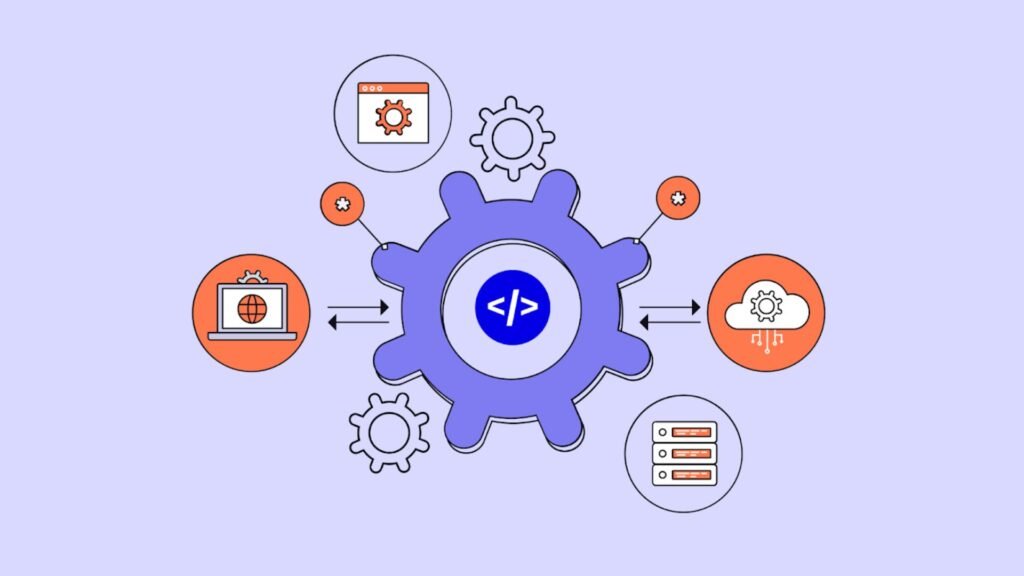Integrating software with other tools can dramatically improve productivity and streamline workflows. When you integrate software with other tools, you create a more cohesive system where data flows seamlessly between applications. In this article, we’ll explain how to integrate software with other tools effectively, ensuring that your systems work together smoothly.
Why Integrate Software with Other Tools?
Integrating software with other tools brings several advantages. Firstly, it saves time by reducing the need for manual data entry. For example, integrating your CRM software with your email marketing tool automates the transfer of customer data, so you don’t have to input it manually. Secondly, it helps in maintaining consistency across different platforms. When your software tools are integrated, data updates in one place automatically reflect across all connected applications. Lastly, it enhances productivity by allowing you to perform multiple tasks from a single platform, reducing the need to switch between different tools.

Steps to Integrate Software with Other Tools
1. Identify Integration Needs
The first step in integrating software with other tools is to identify what you need to achieve. Determine which software applications your team uses and how they should work together. For instance, you might want to integrate your project management tool with your calendar application to keep track of deadlines and meetings in one place. Clearly defining your integration needs helps in selecting the right tools and methods.
2. Choose Compatible Tools
Not all software tools are compatible with each other. To ensure a successful integration, choose tools that offer built-in integration options or support third-party integration services. Check if the tools you are using have integration capabilities or if they can connect through APIs (Application Programming Interfaces). Compatibility is key to making sure the integration process goes smoothly.
3. Use Integration Platforms
Integration platforms can simplify the process of connecting different software tools. Platforms like Zapier, Integromat, and Microsoft Power Automate allow you to create automated workflows between various applications. These tools provide pre-built integration templates that you can customize to fit your needs, making the integration process more straightforward.
4. Set Up API Connections
For a more customized integration, you might need to set up API connections. APIs allow different software applications to communicate with each other. Most modern software tools offer API documentation that guides you through the integration process. Follow the documentation to configure API settings and ensure that data is transferred correctly between the tools.
5. Test the Integration
Before fully implementing the integration, it’s essential to test it to ensure everything works as expected. Conduct thorough testing to verify that data flows correctly between the software tools and that there are no issues. Testing helps identify potential problems early and allows you to address them before going live.
6. Train Your Team
Once the integration is set up, train your team on how to use the integrated system. Ensure that everyone understands how the integration works and how it benefits their workflow. Proper training helps maximize the efficiency of the integration and ensures that team members can utilize the new system effectively.
7. Monitor and Maintain the Integration
Integration is not a one-time task. It requires ongoing monitoring and maintenance to ensure it continues to function properly. Regularly check for updates or changes in the software tools and make adjustments to the integration as needed. Keeping an eye on the integration helps prevent issues and ensures that your systems remain synchronized.
8. Optimize Data Flow
Review and optimize the data flow between integrated tools regularly. Ensure that the data being transferred is accurate and up-to-date. Streamlining data flow can help improve the efficiency of your workflows and prevent data duplication or loss.
9. Utilize Integration Features
Take advantage of any advanced features offered by the integration tools. For example, some platforms offer features like conditional workflows, data mapping, and custom notifications. Utilizing these features can further enhance the functionality of your integrated system and tailor it to your specific needs.
10. Address Security Concerns
When integrating software with other tools, consider security implications. Ensure that data transferred between applications is secure and that sensitive information is protected. Implement proper security measures and follow best practices to safeguard your data during the integration process.
11. Document the Integration Process
Documenting the integration process is crucial for future reference. Keep detailed records of the steps taken, configuration settings, and any issues encountered. This documentation will be helpful for troubleshooting and for future integrations or updates.
12. Review Integration Performance
Regularly review the performance of your integration to ensure it meets your expectations. Evaluate how well the integrated tools are working together and if they are delivering the desired outcomes. Performance reviews help in identifying areas for improvement and optimizing the integration.
13. Seek Professional Help if Needed
If you encounter complex integration challenges, consider seeking help from professionals. Integration experts can provide valuable insights and assist with troubleshooting. Their expertise can help ensure that the integration is implemented effectively and efficiently.
14. Stay Updated with Software Changes
Software tools frequently update their features and functionalities. Stay informed about any changes or updates to the tools you are using and adjust the integration accordingly. Keeping up with updates ensures that your integration remains compatible and functional.
15. Continuously Improve
Finally, continuously look for ways to improve your integration process. Gather feedback from users and analyze the impact of the integration on your workflows. Use this feedback to make improvements and enhance the overall effectiveness of your integrated system.
Conclusion
Integrating software with other tools can significantly enhance productivity and streamline your workflow. By identifying integration needs, choosing compatible tools, and utilizing integration platforms, you can create a more efficient and cohesive system. Regular monitoring, optimization, and ongoing improvements ensure that your integration continues to deliver value and support your business goals.











